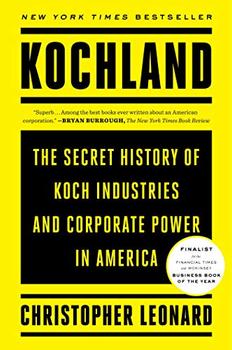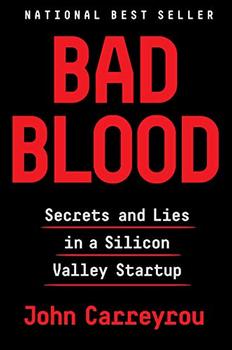Summary | Excerpt | Reviews | Beyond the book | Read-Alikes | Genres & Themes | Author Bio

Chasing Debt from Wall Street to the Underworld
by Jake Halpern"In this world, nothing can be said to be certain, except death and taxes." So declared Benjamin Franklin in 1789. A truism, if ever there was one. However, if Franklin had lived in the 21st century, one suspects he would have added debt to that equation. In our fast-paced modern world, debt has become a reality for us all. Plastic credit cards have all but superseded paper money, making it nigh-on impossible to survive without debt of some sort. We need credit to function - to buy our homes, our cars, our weddings. And perhaps because so many of us rely so heavily on credit, few of us are unaware of the consequences for those who fail to pay their bills - "repossession," "foreclosure" and "poor credit rating" have become modern-day bogey-words, the stuff of which nightmares are made.
But what happens to the debt itself when its owner fails to honor it? What happens after the overdue letters have been sent, and terse phone calls have been made, all to no avail? Most people would assume that once a debt is written off by a lender, that is the end of the matter. The truth could hardly be more different. Thanks to a recent upsurge in the debt-buying industry sparked by the Great Recession, a written-off debt is far from the end of the story. It is, in fact, just the beginning. Like an orphaned child passed into the care of a succession of ever-more-distant relatives, dishonored debt (or "paper") is now "charged off" (or sold by lenders in an attempt to recuperate some of their losses) to debt collecting agencies who believe they can succeed where the original lender has failed. In this way, debt can pass through many hands, not all of them clean. It is this journey, this afterlife of debt, that Jake Halpern attempts to uncover in Bad Paper: Chasing Debt from Wall Street to the Underworld.
This book, which began life as an well-received essay called "Pay Up" in an October 2011 issue of The New Yorker, shines a rather unforgiving light on America's debt industry. By taking us on the trail of what he calls "The Package," a bundle of paper legally bought by a former Wall Street banker-turned-debt collector but subsequently stolen and sold on by unscrupulous "bottom-feeder" debt dealers, we are given rare access to a shadowy demi-monde where ex-cons and former drug dealers rub shoulders with respectable, besuited Wall Street types. It is a topsy-turvy world where data - names, numbers, and social security numbers - is more valuable than cocaine and heroin, where thumb drives have replaced narcotics in secretive street corner trades. And thanks to a rather astonishing lack of regulation, it is a world built on a loop-hole, where legality has become more profitable than illegality. As Jimmy, a former cocaine dealer who now trades in debt, says: "It's just like drugs, man. It's a hustle - only it's a legal hustle. That's why guys on the street, like me, we call debt the 'white man's dope.'"
It is difficult to imagine how Halpern, a fresh-faced journalist and Fulbright scholar, managed to gain the trust of so many of the individuals who have been profiled in this book. But the fact that he did has greatly benefited the end result. Having access to the testimony of so many individuals has allowed him to present a remarkably balanced, unbiased account of "a world that exists below the surface." Yes, there are many shady, unscrupulous characters to be found in the industry, but there are also those, like Jimmy, who are just trying to earn a legitimate buck and get by. By matter-of-factly presenting their back stories, Halpern neatly undermines any prejudices we may have had about the inhabitants of this underworld. By refusing to pass moral judgement, he encourages the reader to refrain from doing so, too. In this way, we come to understand that, much like in the mainstream world, nothing is ever quite as black-and-white as it seems in this industry. And even if Halpern sometimes appears to be seduced into being a little too forgiving of some of these characters, we realize that, sometimes, there really can be honor among thieves.
Bad Paper is smart reportage written in an engaging, fast-paced narrative style. Despite the mention of Wall Street in the title, it is mercifully free of confusing financial jargon. This is a well-told true-life tale. But with its kaleidoscopic cast of characters and a storyline that would be the envy of any Hollywood blockbuster, it is also an irresistibly thrilling read.
![]() This review was originally published in The BookBrowse Review in November 2014, and has been updated for the
November 2015 edition.
Click here to go to this issue.
This review was originally published in The BookBrowse Review in November 2014, and has been updated for the
November 2015 edition.
Click here to go to this issue.

If you liked Bad Paper, try these:

by Christopher Leonard
Published 2020
Just as Steve Coll told the story of globalization through ExxonMobil and Andrew Ross Sorkin told the story of Wall Street excess through Too Big to Fail, Christopher Leonard's Kochland uses the extraordinary account of how one of the biggest private companies in the world grew to be that big to tell the story of modern corporate America.

by John Carreyrou
Published 2020
The full inside story of the breathtaking rise and shocking collapse of Theranos, the multibillion-dollar biotech startup, by the prize-winning journalist who first broke the story and pursued it to the end, despite pressure from its charismatic CEO and threats by her lawyers.
Your guide toexceptional books
BookBrowse seeks out and recommends the best in contemporary fiction and nonfiction—books that not only engage and entertain but also deepen our understanding of ourselves and the world around us.